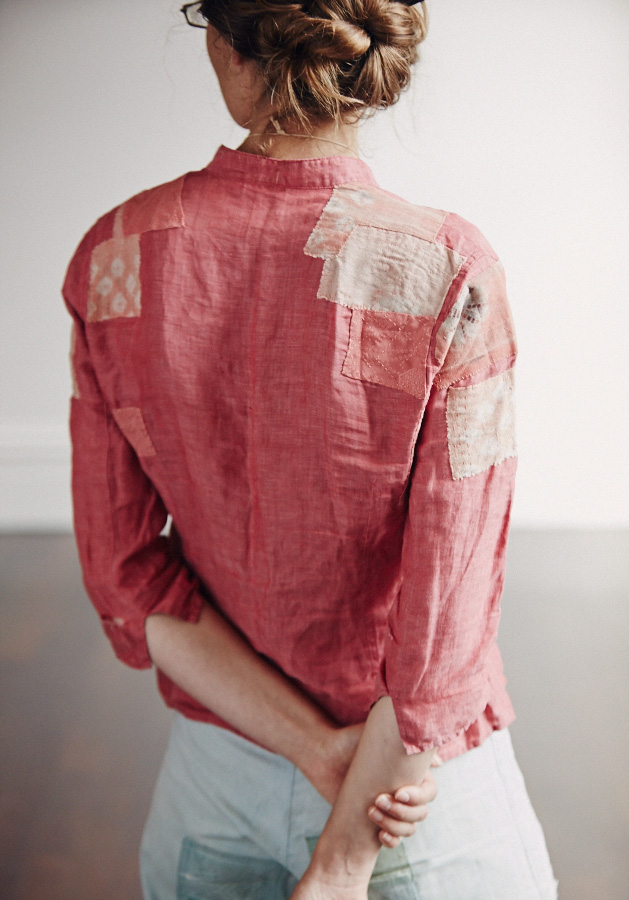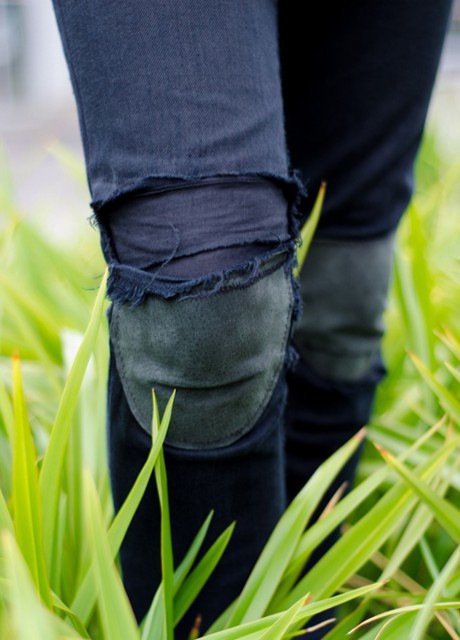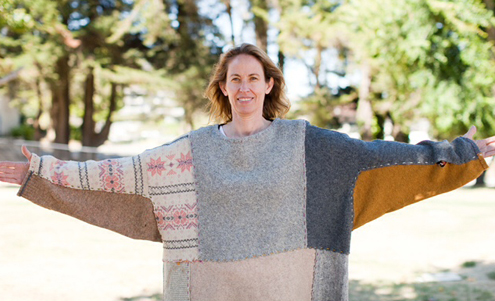A Culture of Care: Lessons from the Sustainable Textiles Movement
Increased global attention to climate change has led to sustainability being addressed through a multitude of lenses. Heritage conservation brings a unique approach to the conversation, in its longstanding role as protector of aged things. Yet, there is room to grow and learn from the movements running parallel to our own.
While heritage practitioners try to find their footing in the fight against climate change, other sectors have developed compelling strategies for sustainable action. Sustainable fashion, for example, is at the forefront of a burgeoning movement for reuse and repair. The movement involves a range of disciplines, from textiles, to electronics, to automobiles and more – but it is clothing and garment makers who are creating widespread cultural interest in how we consume – and dispose – of material goods.
Artists, designers, makers, scholars, and educators in the world of textiles are questioning a cultural psyche that has become embedded in consumerism. Placing the emphasis on individual relationships to our clothing and behaviours of use, they shine necessary light on the mid-life phase of objects beyond just consumption and waste. Modes of resistance to the current trajectory include shopping second hand and for fewer, quality made durable items, but one of the most compelling arguments is for extending the life of items you already own through mending, alteration, and conscientious use.
Factors driving the sustainable textiles movement echo issues attached to the built environment: high carbon emissions from production to use to waste, heavy resource use, unsustainable consumption patterns, and gross amounts of waste. There is much to learn from the creative ways that textile practitioners are responding to these issues, and there exists an opportunity to establish a dialogue with this likeminded movement and its approach to reimagining reuse as an act of care.
Craft of Use
A key topic in the conversation about built heritage and sustainability revolves around a cultural privileging of the New, reflected in a mainstream consumer marketplace that prioritizes shiny new buildings over those that have stood the test of time. Efforts to “green” the industry by supporting the sourcing of “sustainable” or recycled materials for new builds fall short of addressing the cultural factors driving problematic consumption. Textile practitioners have observed this phenomenon in the fashion industry as well, and activists such as Kate Fletcher are working to unravel cultural biases toward new clothing.
Fletcher is a U.K. based author, research professor and design activist who has published numerous books and publications exploring fashion, textiles and sustainability. Her work is widely acknowledged to be reshaping the ways textiles are discussed and taught in the context of climate change. In her role as Professor of Sustainability, Design, and Fashion at the Centre for Sustainable Fashion, University of the Arts London, she founded the Craft of Use initiative. Using ethnographic research techniques, she explores the practices and skills of using garments, suggesting alternative ways of understanding relationships between people and material objects. In her 2016 book Craft of Use: Post-Growth Fashion, Fletcher encourages thinking of everyday decisions about our clothing as political thought processes, writing:
“On-going use is an affront to the consumer society, a slur on throwaway culture. It is fashion in a space where we choose “to want what one has” and one where we revel in the power, imagination and possibility that it offers.”
She frames use not as a static act of purchase, but a process of learning and the development of new skills over time to extend the life of goods in our possession. In this mode of thinking, garments become sites of action and evolution out of which emerge possibilities for enhanced sustainability.
A Craft of Use event hosted by the London College of Fashion in 2014 featured a workshop prompting participants to practice the craft of use by repairing, modifying, or extending the pockets of their garments – inciting a new round of consumption better suited to their needs. At the heart of the exercise is the notion that there are untapped opportunities for satisfaction in our material goods, we simply need to be creative in the ways that we use them.

Visible patchwork on a repaired shirt. Credit: Courtesy of Local Wisdom, localwisdom.com. Photograph by Paul Allister.

Small, thoughtful details in the mended knee of a pair of jeans. Credit: Courtesy of Local Wisdom, localwisdom.com. Photograph by Aliscia Young.
Fletcher’s work demonstrates how the conversation surrounding sustainable textiles is shifting the focus to human-material relationships. So how can heritage conservation integrate this rhetoric into its own approach to climate change and sustainability?
A Practice That Flows
Research has demonstrated that building reuse is essential to achieving Canada’s climate change goals, offering a means of capitalizing on embodied energy and avoided impact from new builds. Yet, building reuse is not the norm. Canada’s real estate development industry and marketplace – from municipal planning, to design and construction industries, to property buyers – is geared towards new construction, which carries a heavier carbon and environmental impact than building reuse. The construction of new buildings offers the path of least resistance, and viable older buildings are needlessly discarded – including heritage buildings.
Despite studies and proven data coming from the heritage sector, the argument for reuse is not having the desired impact on the audiences who need it most. In looking at the culture shifting strategies being communicated successfully by the sustainable textiles movement, heritage conservation seems to fall short in demonstrating an emotive connection between building reuse and people’s daily lives.
The most striking achievement of the sustainable textile movement is the spread of public education initiatives and skills development in clothing reuse and repair. The message is spreading through mending and repair networks (Repair Acts), skills sharing platforms (Visible Mending Programme), digital and print resources (Mending Matters by Katrina Rodabaugh), courses (Creative Mending, North House Folk School), and more. Some initiatives are fueled by individual passion, others are research and industry driven. Either way, the importance of thoughtful use is reaching textile professionals and everyday people alike through numerous channels, prompting a re-evaluation of the impulse to discard when possessions are ageing, dated, jaded, or worn. While it is true that the small scale and low complexity of reusing clothing, in comparison to buildings, is a factor in the successful applicability of reuse practices in daily life, the sentiments driving the movement can be translated to the built environment as the centre of home life and community.
Can heritage conservation drive the importance of building reuse home in a similar way? Heritage practitioners are intimately aware of the value of used things, and can draw on this vocabulary and predisposed notion of reviving old skills to promote alternative ideas about human relationships with the built environment. If there is anything to learn from our textile minded peers, it’s that moments of material resourcefulness have the potential to become “tiny lessons of change,” as Kate Fletcher puts it.

A re-imagined sweater stitched from scraps. Credit: Courtesy of Craft of Use, craftofuse.org
Inciting change in the ways that heritage buildings are valued and cared for will require bringing attention to everyday interactions between people and the places in which they live and work. An appeal to values of self-sufficiency, thoughtfulness, and conscientious engagement with the material world is needed now, more than ever, to establish reuse as a practice that flows through everyday life.
Learn more about Kate Fletcher and Craft of Use at www.katefletcher.com or www.craftofuse.org.
